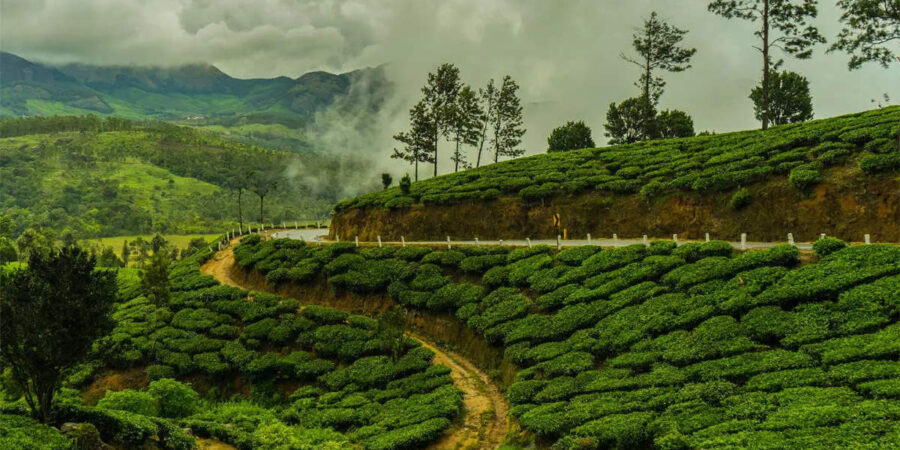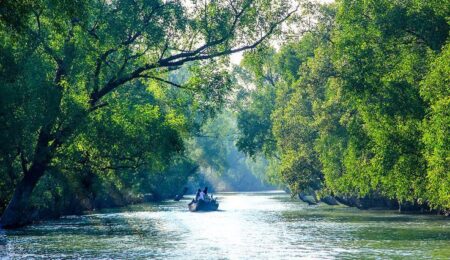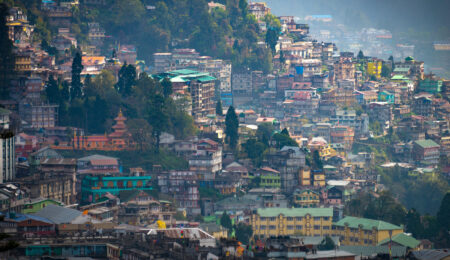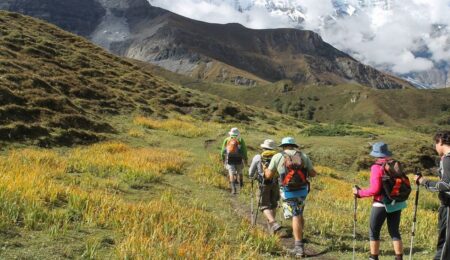 The town of Darjeeling, which is located in the undulating hills of West Bengal, is a place that exemplifies both tranquilly and the glorious beauty of nature. Nevertheless, in addition to its stunning vistas and historical charm, the area has carved out a special place for itself in the world of tea tourism. Tea lovers and tea aficionados alike are invited to go on a sensory trip through the complexities of the tea-making process by Darjeeling’s famed tea gardens, which are characterised by their verdant stretches of emerald green.
The town of Darjeeling, which is located in the undulating hills of West Bengal, is a place that exemplifies both tranquilly and the glorious beauty of nature. Nevertheless, in addition to its stunning vistas and historical charm, the area has carved out a special place for itself in the world of tea tourism. Tea lovers and tea aficionados alike are invited to go on a sensory trip through the complexities of the tea-making process by Darjeeling’s famed tea gardens, which are characterised by their verdant stretches of emerald green.
The very word of Darjeeling conjures up pictures of expansive tea plantations, where rows of tea plants that have been expertly cultivated form a mesmerising tapestry against the background of the Eastern Himalayas. A reputation that extends beyond national boundaries has been bestowed upon Darjeeling tea as a result of the region’s distinctive terrain and climate conditions, as well as the knowledge of tea growers who have been in the business for generations. The unusual flavour, delicate scent, and superb character of this tea have earned it the title of “Champagne of Teas,” and it is acclaimed for all of these qualities.
It is impossible to dig into the world of Darjeeling’s tea tourism without first appreciating the significant role that the renowned tea gardens that dot the landscape play in the industry. Castleton, Margaret’s Hope, Glenburn, and Happy Valley are just few of the legendary names that have become linked with the artistic quality of Darjeeling tea. few of these names are Happy Valley. The various flavour profiles that are characteristic of Darjeeling teas are a result of the fact that each estate in Darjeeling has its own distinct terroir.
The trip into the heart of Darjeeling’s tea culture starts with a visit to these prominent tea estates, where the air is filled with the intoxicating scent of newly harvested tea leaves. This is the beginning of the adventure. The Castleton Tea Estate, which is located at an elevation of four thousand feet, is a demonstration of the skill that is required to cultivate tea. Teas with muscatel overtones, which are characteristic of Darjeeling’s second flush teas, are produced, thanks to the estate’s verdant hills. Margaret’s Hope, which is surrounded by a foggy embrace, provides a magnificent experience with its high-altitude teas, which are renowned for their flowery and fruity overtones.
As tourists make their way through the expansive tea fields, they are able to see the delicate dance of tea pluckers. These trained individuals use their hands to choose the two leaves and a bud that are the essence of Darjeeling tea. This painstaking operation, which is sometimes referred to as “fine plucking,” ensures that only the freshest and most fragile leaves are selected, which contributes to the tea’s complex flavours. A cultural element is added to the sight of tea-making by the rhythmic rustling of tea pluckers who are clothed in colourful traditional clothing.
Visiting the tea farms also affords visitors the unique chance to see the complex process of tea production firsthand, which is an uncommon experience. There is a reverberation of the buzz of machinery and the rich perfume of tea leaves undergoing metamorphosis that can be heard emanating from the tea factories that are tucked among the beautiful hills. The path of brewing tea begins with the withering process, which involves spreading out newly picked leaves in order to dry them out and lower the amount of moisture they contain. After shedding part of their water content, the leaves go to the rolling stage, where they are gently twisted in order to release enzymes that catalyse the fermentation process. This step is the fourth and final stage.
During the fermenting process, which is an essential step in the production of Darjeeling tea, meticulous monitoring is performed in order to obtain the flavour profile that is desired. Darjeeling tea may be divided into three separate categories: first flush, second flush, and autumnal. These classifications are derived from the varying amounts of oxidation. The first flush, which is collected in the spring, is renowned for its light and flowery notes, whilst the second flush, which is harvested in the late spring and early summer, is characterised by a heavier body and a muscatel flavour. Teas collected in the autumn have a powerful flavour profile that has a sense of maturity. These teas are harvested later in the year.
The fire process is the culmination of the trip through the tea-making process. During this procedure, the tea leaves are exposed to regulated heat in order to halt the fermentation process and preserve the flavours. Because of this, there is a wide variety of Darjeeling teas, each of which has its own distinct personality and appeal. A sensory trip that resonates with tea enthusiasts all around the globe is unfolded by Darjeeling’s teas, which range from the delicate muscatel scent of a second flush tea to the briskness of a first flush tea when it comes to the tea.
 Tea tourism provides visitors with an immersive experience that goes beyond the tea farms and includes the picturesque tea bungalows that are scattered throughout the region. These homes, which date back to the colonial period and are completely immersed in history, provide a look into the past of British planters who were responsible for shaping Darjeeling’s tea heritage. A magnificent refuge in the middle of the picturesque tea gardens is provided by accommodations such as the Glenburn Tea Estate and the Singtom Tea Estate. These accommodations provide visitors the opportunity to enjoy the peace and quiet of the hills while also participating in tea tasting sessions that have been carefully designed.
Tea tourism provides visitors with an immersive experience that goes beyond the tea farms and includes the picturesque tea bungalows that are scattered throughout the region. These homes, which date back to the colonial period and are completely immersed in history, provide a look into the past of British planters who were responsible for shaping Darjeeling’s tea heritage. A magnificent refuge in the middle of the picturesque tea gardens is provided by accommodations such as the Glenburn Tea Estate and the Singtom Tea Estate. These accommodations provide visitors the opportunity to enjoy the peace and quiet of the hills while also participating in tea tasting sessions that have been carefully designed.
It is very necessary to pay a visit to the Tea Research and Development Centre in order to get a more in-depth understanding of the cultural fabric that comprises Darjeeling’s tea legacy. Insights into the continuous efforts to maintain and improve Darjeeling’s tea industry are provided by this institution, which is committed to developing the science and art of tea farming. The centre is responsible for doing research on novel tea kinds, production methods, and sustainable practices. This research helps to ensure that Darjeeling’s tea heritage will endure despite the changing trends that are occurring throughout the world.
Darjeeling’s tea tourism also includes participation programmes, which allow visitors to try their hand at picking tea leaves and get an insight of the complexities of tea processing. These programmes are available to people who are interested in gaining a hands-on educational experience. In addition to fostering a relationship between the tourists and the tea planters, these immersive experiences not only give a greater awareness for the labor-intensive nature of tea growing, but they also create a shared respect for the artistry that is involved in the production of Darjeeling tea.
Additionally, the allure of Darjeeling’s tea tourism is not limited to the hours of daylight. During the time when the light is sinking below the horizon, the mysterious charm of tea tasting sessions at night begins to unravel. The ethereal illumination of lanterns, the cold mountain wind, and the delicate perfume of tea being brewed all come together to create an atmosphere that is quite enchanting. As the night sky is filled with stars, guests take pleasure in the nuances of Darjeeling teas, with each taste connecting with the terroir and tradition of the area.
To summarise, Darjeeling’s tea tourism is an adventure that takes visitors deep into the heart of one of the most prestigious tea-producing areas throughout the globe. Every aspect of Darjeeling’s tea culture, from the world-famous tea plantations to the centuries-old tea-making practices, encourages visitors to go on a journey of the senses. The journey goes beyond only appreciating tea; it is an investigation into the landscapes, the people, and the stories that have contributed to Darjeeling’s transformation into a shining example of tea perfection. For those who are interested in immersing themselves in the art of tea-making, Darjeeling presents a world in which each cup of tea tells a story about the abundance of nature and the efforts of humans.





